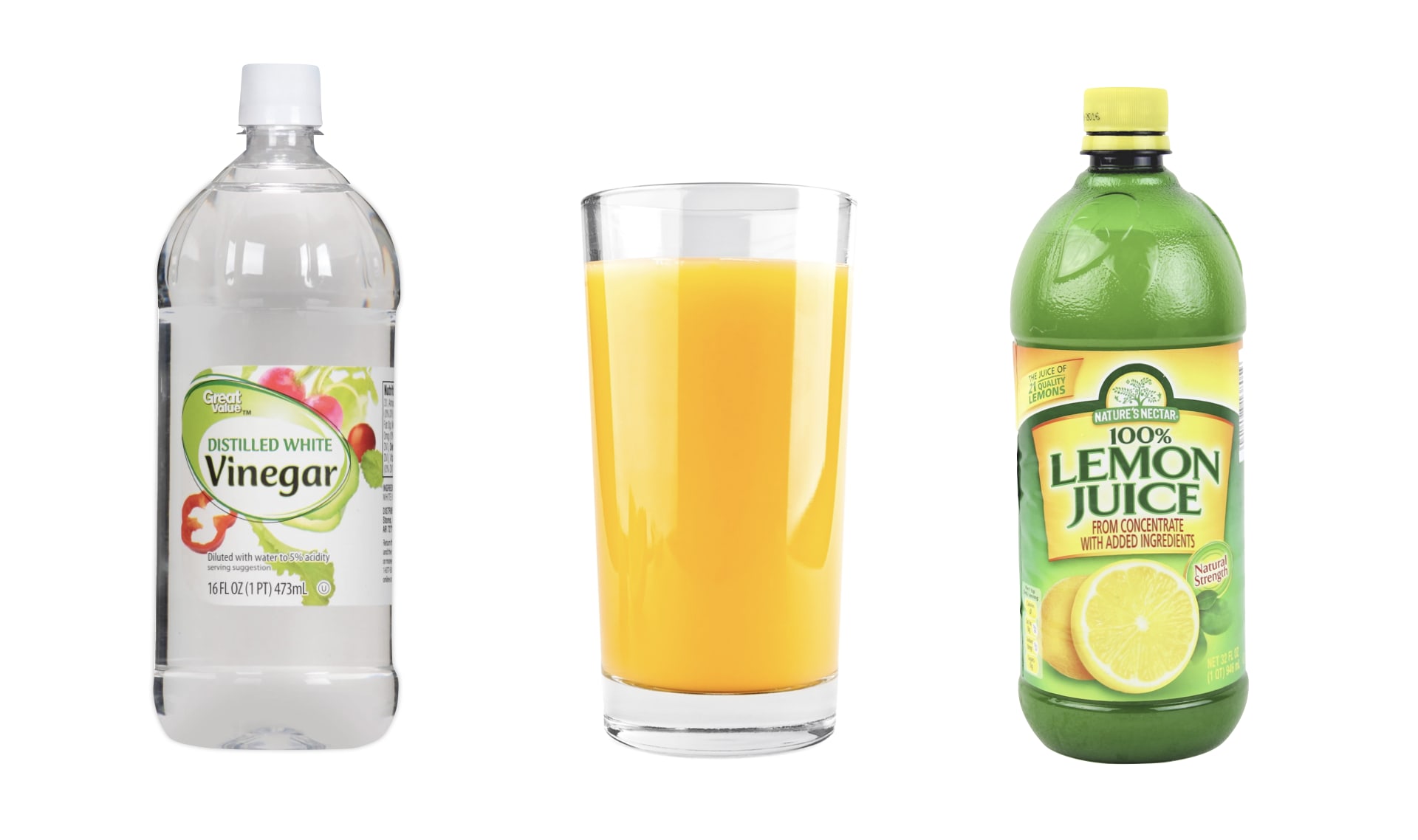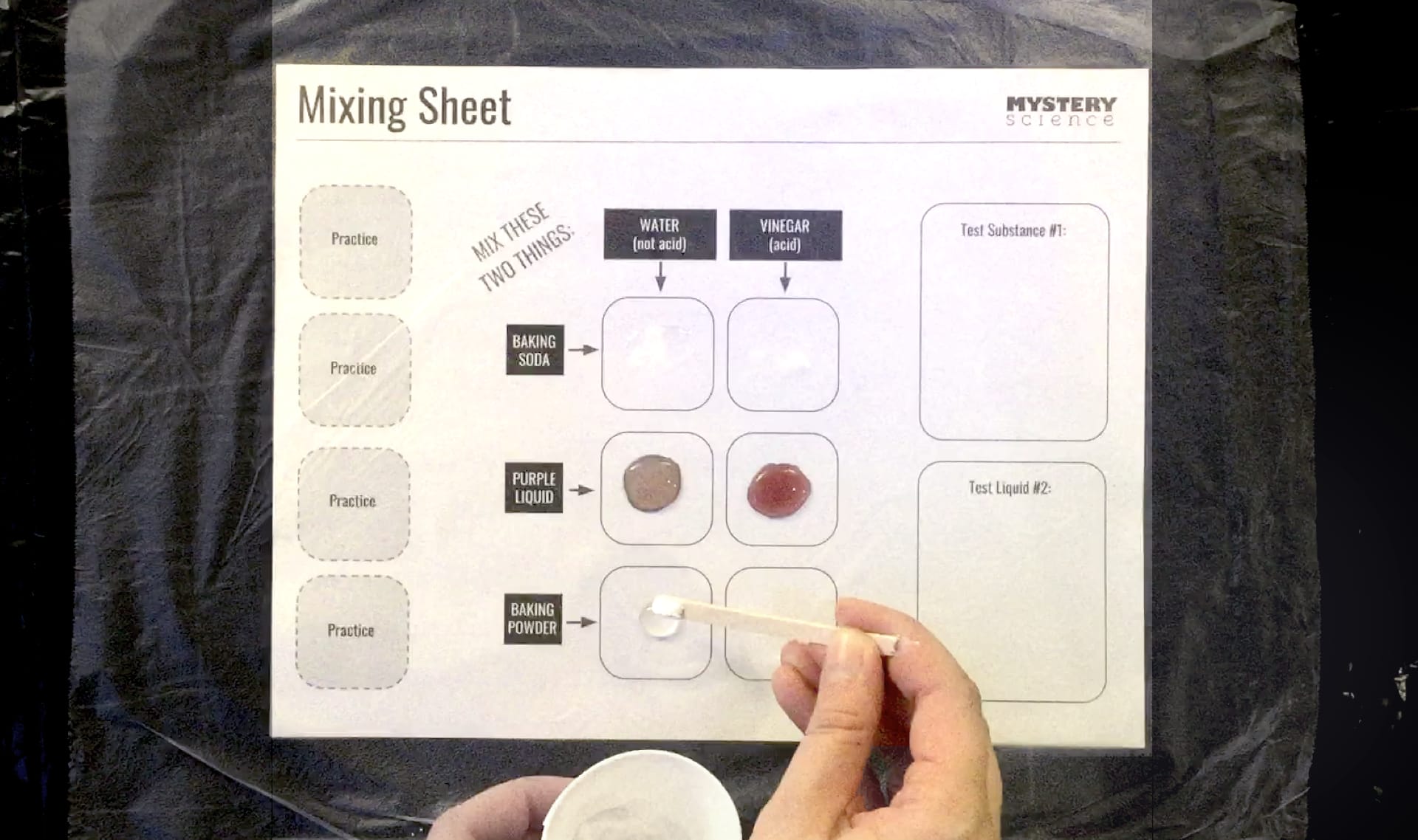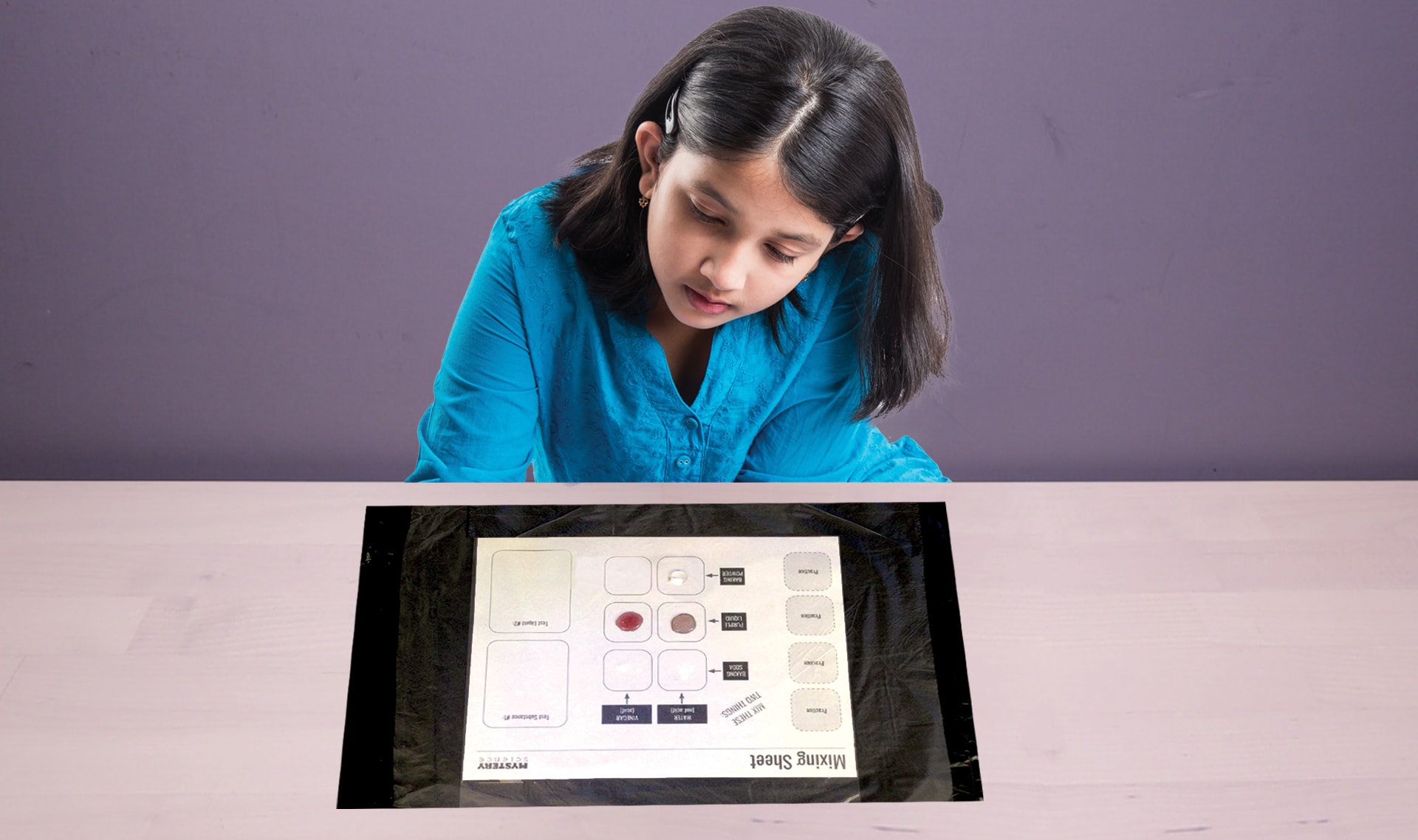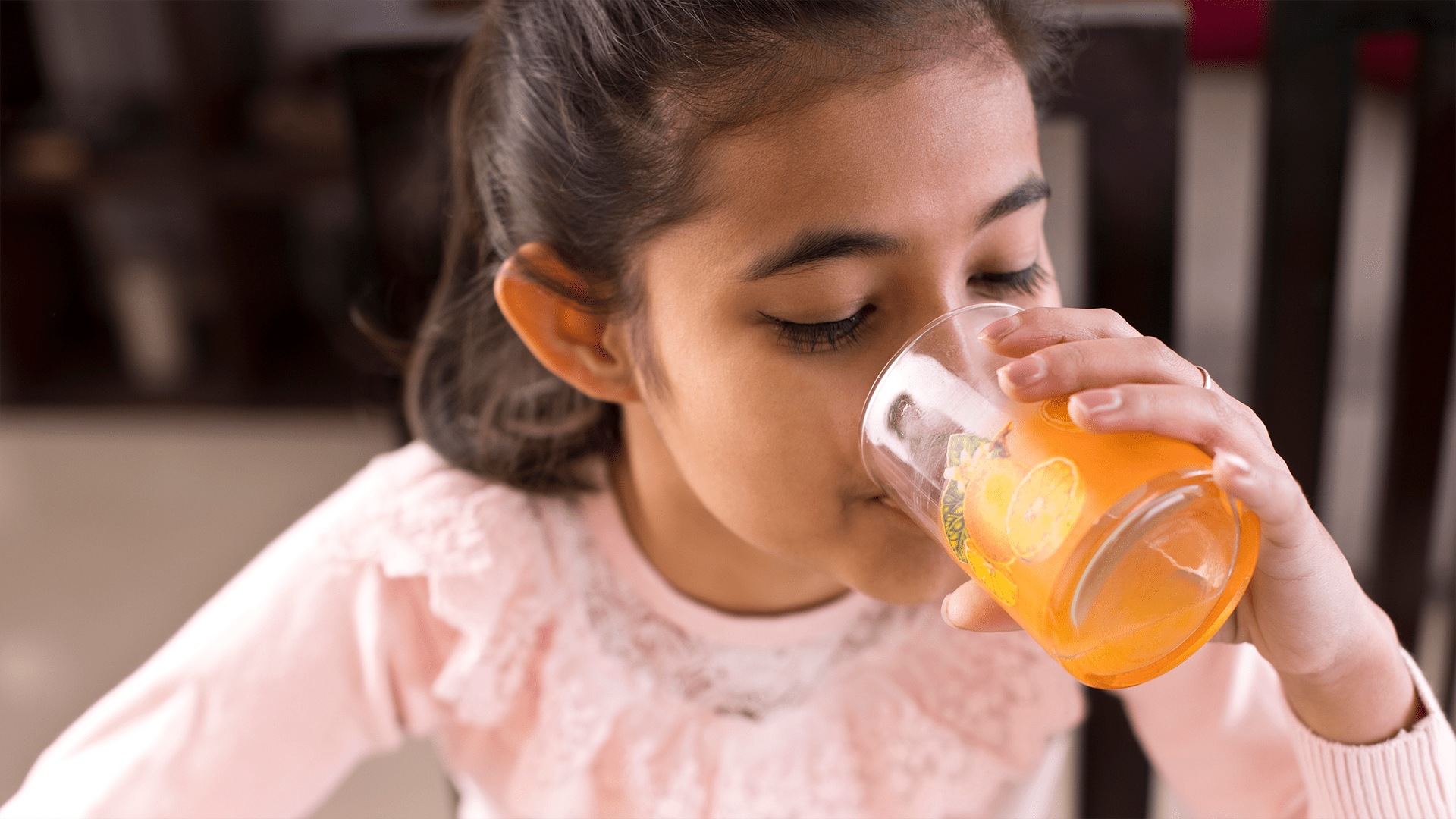You will need access to water for this activity.
We suggest students work in pairs and two pairs of students share supplies at the same table group. Homeschool students can work on their own.
Prepare the Purple Indicator Liquid
If you’re using purple cabbage, put 2 cups of chopped cabbage in 1½ cups of water. Leave it for at least an hour, stirring occasionally. The cabbage will turn the water purple. Drain the chopped cabbage and reserve the purplish-pink liquid. If you’re using black beans, put 1 cup of beans into 2 cups of water and leave them for at least an hour. The beans will soak up some water and turn the rest purplish brown. Drain the beans and reserve the purplish-brown liquid.
Prepare the Straws
Cut each straw in half to make two short straws. Students will use these to transfer drops of liquid. (Full-length straws are likely to tip over cups.)
Prepare the Testing & Acid Reaction Supplies
Gather all of your Dixie cups and separate them into seven equal piles. You will fill the cups in each of these piles with a different liquid or powder.
- Water Cups: Add 2 tablespoons of water.
- Vinegar Cups: Use a permanent marker to label each of these cups with a “V” so students can quickly tell these apart from the water. Add 2 tablespoons of vinegar.
- Baking Soda Cups: Add 2 tablespoons of baking soda. (You may want to tell students that baking soda is different from baking powder.)
- Baking Powder Cups: Use a permanent marker to label each of these cups with a “BP” so students can quickly tell these apart from the baking soda. Add 1 tablespoon of baking powder.
- Purple Indicator Cups: Add 1 tablespoon of the purple indicator liquid that you prepared.
- Unknown Substance “A” Cups: Add 1 tablespoon of an unknown substance. We suggest using an acid such as lemonade, ketchup, mustard, pickle juice, or yogurt (there are many acids in the kitchen).
- Unknown Substance “B” Cups: Add 1 tablespoon of a different unknown substance. We suggest a non-acid such as salt water. (You can mix 1 tablespoon of salt into a cup of water.)
Separate Supplies for Easy Distribution
We recommend you set up four supply stations.
Station A: Acid Reaction Supplies
- “Acid Reaction Supplies” printouts
- Water Cups
- Vinegar Cups
- Straws (2 per group)
From this station, each group of students will bring the following back to their desk:

Station B: Testing Supplies
- “Testing Supplies” printouts
- Baking Soda Cups
- Baking Powder Cups
- Purple Indicator Cups
- Stir Sticks (2 per group)
- Straw (1 per group)
From this station, each group of students will bring the following back to their desk:
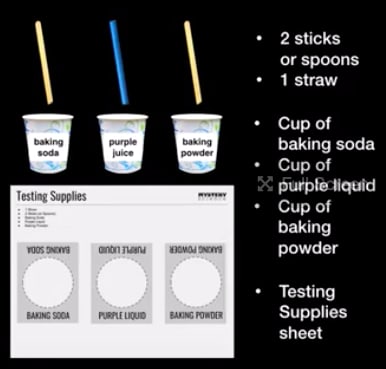
Station C: Worksheets & Clean-up Supplies
- "Mixing Sheet" printouts
- "Results" printouts
- Sheet Protector
- Paper Towels
From this station, each pair of students will bring the following back to their desk:
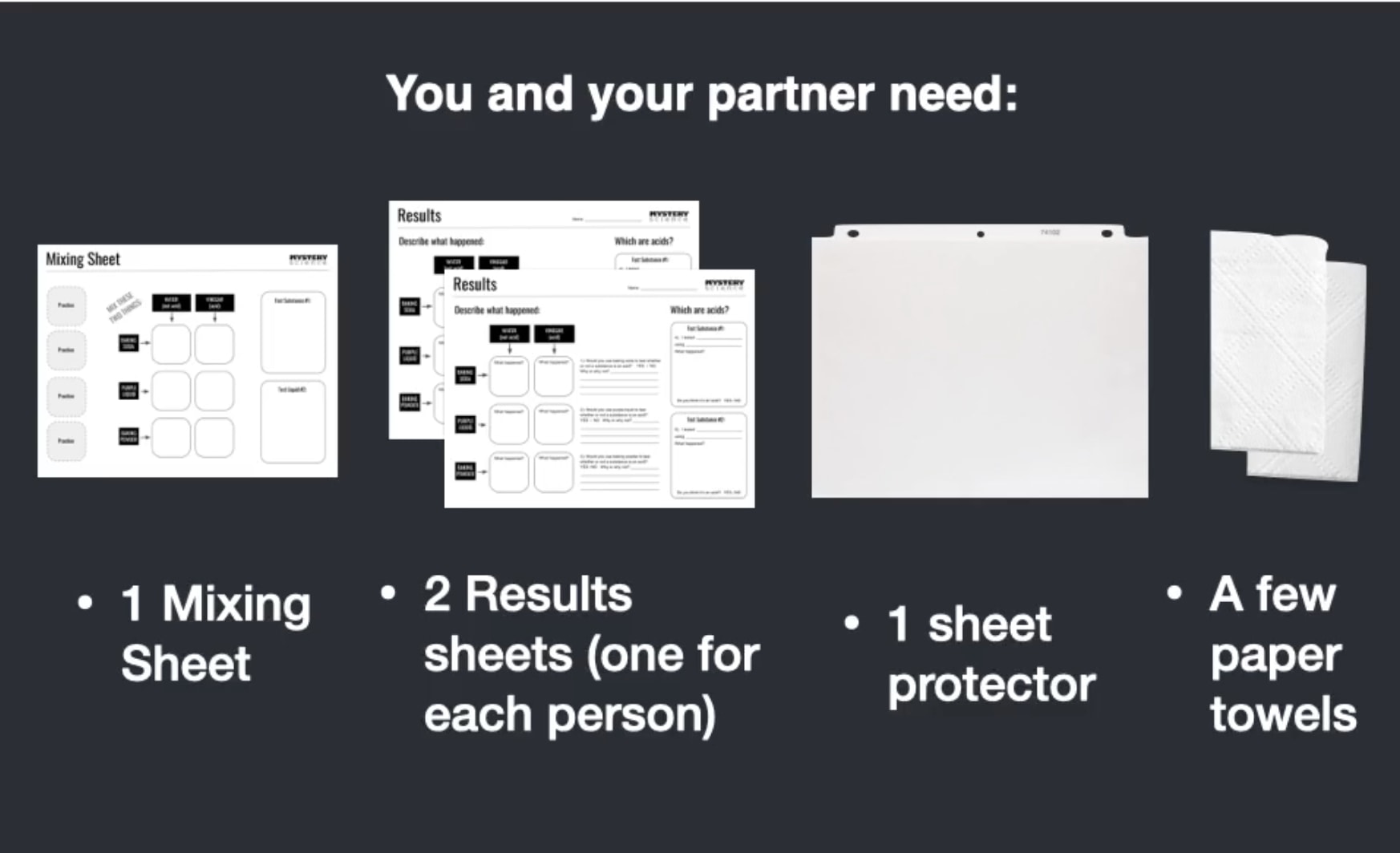
Station D: Unknowns
- Unknown Substance “A” Cups
- Unknown Substance “B” Cups
- Straws (1 or 2 per group, depending on unknown substance type)
- Stir Sticks (1 or 2 per group, depending on unknown substance type)
- Toothpicks
From this station, each pair of students will bring the following back to their desk:
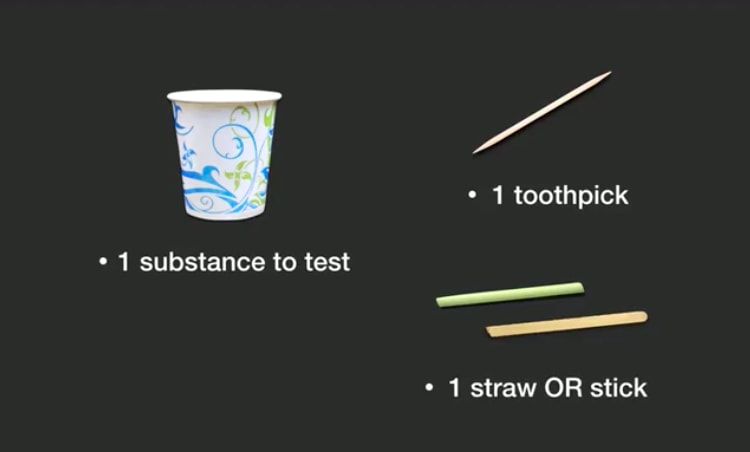
Teacher Background
The purple liquid that you prepare from the cabbage (or black beans) is called an indicator. There’s a pigment in purple cabbage and black beans that changes color when it reacts with an acid or base. You and your students should notice that the color of the liquid changes to a reddish/pink when you add it to any of the acids (e.g. vinegar). You can then use this information to test unknown liquids. If the liquid turns pink, then it’s an acid. You can learn more about indicators here.
You and your students will also notice that when baking soda is mixed with vinegar, there is fizzing that indicates an acid-base reaction. But baking soda does not fizz when mixed with water, making it a good acid indicator. Baking powder will also fizz with vinegar. But you will notice that baking powder will also slightly fizz when water is added. This is because baking powder is actually a mixture of baking soda (base) and cream of tartar (acid). This is why it reacts with both water and vinegar. So baking powder is not a good indicator because it fizzes when any liquid is added.

























